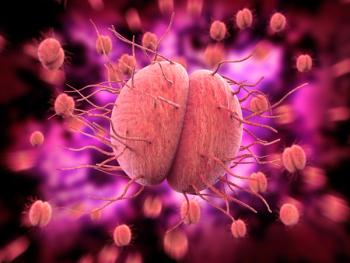
- Consultant for Pediatricians Vol 6 No 2
- Volume 6
- Issue 2
Conjunctival "Pyogenic Granuloma"
A 10-year-old boy had a 3-day history of an itchy eye. His mother thought he had somehow cut his upper left eyelid.
A 10-year-old boy had a 3-day history of an itchy eye. His mother thought he had somehow cut his upper left eyelid.
The boy had no history of recent trauma or discharge from the affected eye. He denied eye pain, swelling, and changes in vision. He was afebrile and otherwise healthy. Previous medical history was noncontributory.
The patient's sclerae were clear; his pupils were equal, round, and reactive to light. Extraocular movements were intact. A flattened, glistening, pink, polypoid mass on a thin stalk protruded from the inner aspect of the lateral upper left eyelid.
Martin Coles, MD, of Pediatric Emergency Medicine Associates, Atlanta, suspected pyogenic granuloma. A pediatric ophthalmologist who reviewed the case agreed with the presumptive diagnosis. The child was referred to the ophthalmologist for excision of the lesion. However, he subsequently moved to Mexico and in a follow-up phone conversation, the mother stated that the lesion had resolved on its own after a few weeks. The clinical presentation of the lesion and its spontaneous regression without intervention strongly suggest pyogenic granuloma.
The term "pyogenic granuloma" is a misnomer: this lesion is neither infectious nor histologically granulomatous. Its cause is unknown. Pyogenic granulomas usually appear in late childhood. The majority of these benign masses appear on the head, neck, and extremities; lesions on the conjunctiva are unusual, however. The differential diagnosis of such lesions includes squamous papilloma, conjunctival lymphoma, and ocular lymphangiectasis. Pathologic examination is necessary for definitive diagnosis.
Pyogenic granulomas grow rapidly and regress spontaneously. Removal is indicated for cosmesis or when the mass causes discomfort or is prone to bleeding. Simple excision at the base of the lesion is the treatment of choice. Pathologic examination of the specimen after removal is recommended because these lesions can mimic malignant tumors, such as squamous cell carcinomas. The lesions may recur after removal.
Articles in this issue
almost 19 years ago
5-Month-Old Girl With Left Facial Droop of Sudden Onsetalmost 19 years ago
ADHD and the Adolescent Driver:almost 19 years ago
Photo Quiz: Making the Rounds: Round 2almost 19 years ago
Amniotic Band Syndromealmost 19 years ago
Becker Nevus and Molluscum Contagiosumalmost 19 years ago
Photoclinic: Sucking Blistersalmost 19 years ago
How Reliably Do Children Report Asthma Symptoms?almost 19 years ago
Juvenile Nasopharyngeal Angiofibromaalmost 19 years ago
Case in Point: Hypophosphatemic RicketsNewsletter
Access practical, evidence-based guidance to support better care for our youngest patients. Join our email list for the latest clinical updates.








